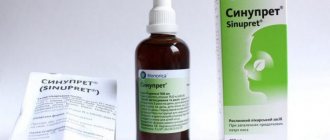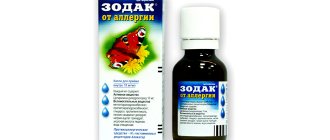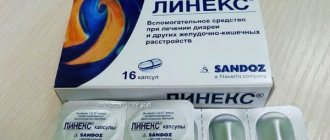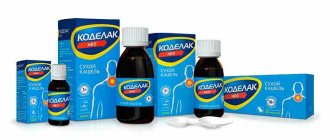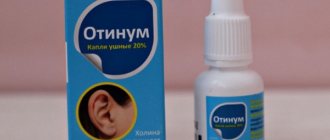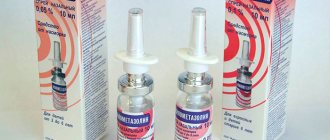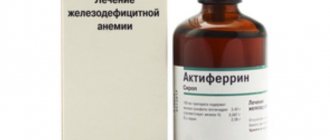Modern parents are increasingly faced with manifestations of allergies in their children. Its causes are very diverse - from intolerance to certain foods, plant pollen or animal hair to allergies to sunlight, cold or medications. In addition, antihistamines help not only against seasonal, food or contact allergies. They have become mandatory to prescribe before and after vaccination, for chickenpox, taking antihelminthic drugs, and even for ARVI.
In order not to spoil your child’s long-awaited outdoor recreation or contact with a pet, you should always be on guard. We will tell you what symptoms the antihistamine Suprastinex in the form of drops will help you cope with.
Release form
Suprastinex drops are available in a brown glass bottle with a dropper and a child-resistant cap. The bottle contains 20 ml of product and is packaged in a cardboard box along with instructions for use.
The drops are colorless and without sediment, have a slight odor of acetic acid.
Compound
The active ingredient in Suprastinex drops is Levocetirizine. This is a substance of the third generation of antihistamines, which acts quickly and has a long-lasting effect. It also has a significant advantage - it does not harm the functioning of the cardiovascular system, therefore it is considered completely safe. One milliliter of Suprastinex drops contains 5 mg of this substance.
Pharmacokinetics
The pharmacokinetic parameters are almost the same as the antiallergic drug Cetirizine. After taking Suprastinex drops, its substances are completely absorbed through the mucous membrane of the digestive tract. Food intake does not affect the amount of absorbed components, but can reduce the rate of their penetration into the blood, which lengthens the time for the manifestation of the therapeutic effect. In adults, after a single dose of Suprastinex 5 mg, the maximum level of levocetirizine in plasma is observed after 2 hours in an amount of 270 ng/ml.
The active component binds to plasma proteins by 90%. Less than ¼ of levocetirizine is metabolized in liver cells. 80-85% of the drug is excreted by the kidneys with urine, the rest through the intestines with feces. In case of renal failure, the release of the drug is reduced, which must be taken into account when determining the dose of Suprastinex per dose. During hemodialysis, about 10% of the active substance is removed from the blood.
Indications (why prescribed to children)
Most often, Suprastinex drops are prescribed for the treatment of:
- allergic rhinitis and conjunctivitis;
- hives;
- pollen allergies;
- Quincke's edema;
- allergic dermatoses, accompanied by itching and rashes.
Since the drops are based on a new generation antihistamine, it is well tolerated by children.
Contraindications and side effects
- The drug is not prescribed to children under two years of age, as well as to those with hypersensitivity to Levocetirizine or an auxiliary component of the drug.
- Suprastinex should be taken during pregnancy (especially in the first and third trimester) only if the potential benefit to the pregnant woman outweighs the risk to the fetus, since no studies have been conducted on the effect of the drug on pregnant women. If it is necessary to use the drug during lactation, breastfeeding should be suspended.
- The drug should be taken with caution if the liver and/or kidney function is impaired, as well as in old age.
Possible side effects in the form of headache, dizziness, increased fatigue, dry mouth, abdominal pain, nausea.
Suprastinex 0.005/ml 20ml bottle drops
Enantiomer of cetirizine; competitive histamine antagonist; blocks H1-histamine receptors, the affinity for which is 2 times higher than that of cetirizine. Affects the histamine-dependent stage of allergic reactions; reduces the migration of eosinophils, reduces vascular permeability, limits the release of inflammatory mediators.
Prevents the development and facilitates the course of allergic reactions, has an antiexudative and antipruritic effect; has virtually no anticholinergic and antiserotonergic effects. In therapeutic doses it has virtually no sedative effect.
The action begins 12 minutes after taking a single dose in 50% of patients, after 1 hour in 95%, and continues for 24 hours.
Side effects
From the immune system: very rarely: allergies, including anaphylaxis. Metabolic: very rare: weight gain.
From the central and peripheral nervous system: often: drowsiness, headache, increased fatigue, infrequently: asthenia, rarely - migraine, dizziness From the respiratory system: very rarely: dyspnea. From the gastrointestinal tract: often: dry mouth, infrequently: abdominal pain, very rarely: nausea, dyspepsia.
From the subcutaneous tissue: very rarely: angioedema, itching, rash, urticaria.
From the laboratory parameters: very rarely: changes in functional “liver” tests
Special conditions
Suprastinex drops are not recommended for use in children under 2 years of age due to insufficient data on the use of the drug. During the treatment period, it is recommended to refrain from drinking ethanol (see section “Interaction with other drugs”).
Suprastinex R drops can cause allergic reactions (sometimes late), as they contain methyl parahydroxybenzoate and propyl parahydroxybenzoate.
Impact on the ability to drive vehicles and operate machinery
During the treatment period, it is recommended to refrain from engaging in potentially hazardous activities that require increased concentration and speed of psychomotor reactions.
Instructions for use and dosage
Suprastinex drops should be taken on an empty stomach or with food, the dosage for children from 2 to 6 years is: 5 drops (1.25 mg or 0.25 ml) twice a day. The recommended dose for adults and children over 6 years of age is: 20 drops (5 mg or 1 ml) once a day. The required number of drops must be added to water and drunk immediately after dilution.
The duration of taking Suprastinex depends on the disease:
- when treating allergic rhinitis, the drug is continued throughout the entire period of exposure to allergens;
- the duration of treatment for hay fever should be determined by the doctor, but on average the course ranges from one to six weeks;
- for chronic diseases (year-round rhinitis, chronic urticaria), the course of taking the medication can be longer according to the recommendation of a doctor.
Did you know? Taking antihistamines is practically useless if contact with the allergen has already occurred. Antihistamines must accumulate in the body, which is when they will help cope with the allergic reaction. Therefore, it is necessary to start a course of medication 2-3 weeks before the flowering season.
Pharmacodynamics
Suprastinex drops for children have pronounced antiallergic properties. After the active component penetrates the digestive tract, it is absorbed into the systemic bloodstream and distributed throughout the body. Levocetirizine suppresses the production of histamines, which lead to the development of an allergic reaction when concentrated in the blood in large quantities.
As a result, the spread of substances slows down and the risk of developing allergies is reduced. The product also reduces the permeability of the vascular wall, which leads to the elimination of swelling and redness of the skin.
As a result, the general condition is alleviated, the rash disappears, as well as swelling of the skin. Patients note the disappearance of areas of redness and peeling, which also has a beneficial effect on the emotional state.
When taking the drug, a slight sedative effect is observed, as well as elimination of swelling of the eyelids and symptoms of allergic rhinitis. The official instructions indicate that the drug does not have sedative properties, but many patients report drowsiness when taking the medication.
One of the important properties of the product is antipruritic. This can significantly alleviate the course of pathology in patients with chronic forms of psoriasis, eczema or dermatitis.
Interaction with other drugs
Since Levocetirizine does not undergo hepatic metabolism and does not interact with liver enzymes, it does not have competitive drug interactions. This allows it to be combined with antibiotics, antifungals, antivirals and other medications. During the treatment period, it is recommended to refrain from drinking ethanol.
The extent of absorption of Levocetirizine is not reduced when taken with food, but the rate of absorption is reduced.
Overdose
An overdose of Suprastinex occurs when the patient takes the medicine in large doses for a long time and uncontrollably.
Signs of an overdose of antihistamines are expressed by the following clinical symptoms: drowsiness, respiratory distress, shortness of breath, lethargy, dizziness, severe dry mouth, tachycardia. If such reactions occur, the drug should be stopped immediately and the victim taken to the hospital. In case of overdose, gastric lavage, oral administration of enterosorbents and the need for symptomatic treatment are recommended.
Analogs
Analogues of Suprastinex, first of all, are drugs whose main active ingredient is also Levocetirizine. These are Allerway, Ksizal, Glenset, Zenaro, Cesera, Zodak Express, Alerzin, Aleron, Cetrilev, L-tset, Free-Al, Eltset.
There is also a homeopathic medicine for allergies - Luffel. It is prescribed to children from three years of age. Also, depending on the allergy symptoms, antihistamines of all three generations can act as analogues of Suprastinex.
- Diphenhydramine, Diazolin, Suprastin, Tavegil, Fenkarol.
- Claridol, Fenistil, Clarisens, Clarotadine, Loratadine, Lomilan, Claritin, Zirtec, Kestin, Cetrin.
- Desal, Fexofast, Erius, Xizal, Fexadin, Telfast, Trexil, Gismanal.
Important! Suprastinex is easily confused with Suprastin.
But these drugs have different active ingredients at their base. Suprastin belongs to the first generation of antihistamines. Suprastinex is the latest, third generation of antihistamines.
Reviews
Marina:
At the dacha, my son was bitten on the eyebrow by a mosquito, and in the morning he could not open his eyes. We washed it with cold water, gave it Suprastinex drops and applied Psilobalm to relieve itching and swelling. An hour later - no pain, no swelling. The bite mark finally disappeared after 2 days.
Evgeniya:
In the spring, the child’s nose is running, he can’t breathe, his tears are streaming, he constantly sneezes, his eyelids swell. Suprastinex helps, Flix in the nose and Dexamethozone in the eyes. This is the only way we can be saved according to the doctor’s instructions. We drink the sorbents for another 10 days, which is also important.
Daria:
We had a bee sting while on vacation at sea. The sting was taken out, smeared with a “star”, and Suprastinex was given in drops. They did it all at once. They didn’t do anything else, since the most dangerous thing that can happen is angioedema, and it usually happens immediately after a bite. We got through this moment safely, which is why allergy medications helped.
Antonina:
We had chickenpox, the child itched terribly, neither she nor we could sleep at night... Eden did not come. Suprastinex relieved the itching best, at least for us. The child slept well after it and generally tolerated the illness better.
Vita:
We had a virus and otitis, the temperature was 39.2, we took antibiotics. A rash appeared on the legs and arms, which seemed to be caused by the antibiotic. Edem and Alerzin did not help. The rash kept getting worse. We took Suprastinex and saw the effect after a couple of hours.
